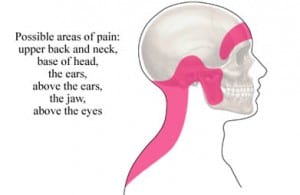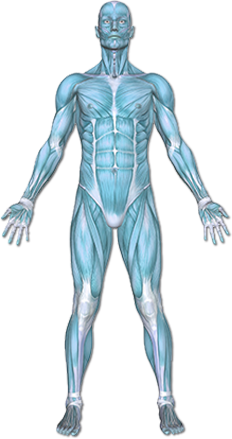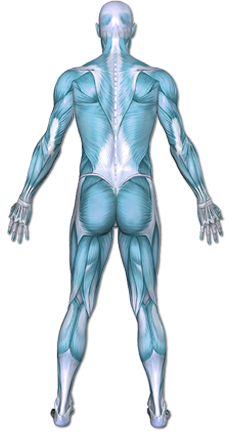Tension Headaches
Tension headache refers to radiating, steady pain in the head, neck, or eyes that can be mild or intense. Tension headaches may be occasional or chronic.


Copyright © Nucleus Medical Media, Inc.
This content was created using EBSCO’s Health Library
Tension headaches may occur when muscles in the neck, face, and scalp contract. In some cases, muscle contraction is the result of teeth grinding and jaw clenching. In others, it may be unknown.
This content was created using EBSCO’s Health Library
Tension headaches are more common in women. Other factors that may increase your chance of getting a tension headache include:
- Stress
- Hunger
- History of teeth grinding or jaw clenching
- Anxiety
- Depression
- Sleep apnea or sleep disruption
- Eyestrain
- Poor posture
- Injuries or arthritis of the neck area
- Temporomandibular joint disease (TMJ)
- Medications
- Low physical activity
- Obesity
- Smoking
This content was created using EBSCO’s Health Library
Some tension headaches are nearly constant, with daily pain that may vary in intensity, while others occur less frequently. Symptoms usually start slowly and build. Tension headache may cause:
- Constant, steady pain and pressure
- Dull and achy pain
- Pain which may be felt on both sides of the head, in the forehead, temples, and the back of the head
- Pressure may feel like a tight band around the head
- Intensity ranges from mild to severe and can vary during the day
- Tightness in head and neck muscles
Headaches can become so severe and constant that they interfere with normal activities and sleep.
This content was created using EBSCO’s Health Library
The doctor will ask about your symptoms and medical history. A physical exam will be done. Diagnosis can be made on exam, based on specific features. The cause of the headaches however, may be more difficult to determine. Tests may include:
- Neurological exam
- Imaging is not usually needed, but if pain is unusual or severe it may be done to look for other causes of the headache.
Imaging tests include:
- CT scan
- MRI scan
This content was created using EBSCO’s Health Library
A physical therapist may be able to find the source of your headaches. Once an evaluation is made, your physical therapist will help you create a comfortable and appropriate home and work environment and will design a program of rest (if needed) and exercise. If the source of your headache is in the TMJ (jaw) area, your physical therapist may refer you to your dentist to design the best plan of care for your jaw and headaches. Tension headaches can be treated in a variety of ways with manual therapy, soft tissue mobilization, and exercise. Most simple headaches will go away by themselves. However, if the headache is persistent or recurring, make sure that neck strain, poor posture, or eye strain is not the culprit. If your headache is severe or persists for more than a couple of days, seek professional attention right away. Sometimes muscles in the back of the neck can irritate nerves in the head, causing a headache. Physical therapy can significantly improve this problem.
This content was created using EBSCO’s Health Library
To help reduce your chances of getting a tension headache, try the following strategies:
- Keep a diary, marking when headaches occur and what you were doing before they started.
- Learn to recognize what provokes a tension headache.
- Avoid or minimize stressful situations.
- Take frequent breaks to walk or move around.
- Make time for pleasurable activities.
- Practice relaxation techniques, such as deep breathing and focusing on something pleasant.
- Learn techniques for coping with difficult or stressful situations.
- Make time for friends and build a strong support system.
- Go to bed early and get a good night’s sleep.
- Exercise regularly.
- Do not slouch.
- Hold the phone, rather than cradling it on your shoulder, or use a headset.
This content was created using EBSCO’s Health Library
This content was created using EBSCO’s Health Library
REFERENCES:
- Dambro MR. Griffith’s 5-Minute Clinical Consult. Philadelphia, PA: Lippincott Williams & Wilkins; 1999.
- Goetz CG. Textbook of Clinical Neurology. Philadelphia, PA: WB Saunders Co; 1999.
- Melchart D, Streng A, Hoppe A, et al. Acupuncture in patients with tension-type headache: randomized controlled trial. Brit Med J. 2005;331:376-379.
- NINDS headache information page. National Institute of Neurological Disorders and Stroke website. Available at: http://www.ninds.nih.gov/disorders/headache/headache.htm Updated November 8, 2013. Accessed December 30, 2013..
- Rakel RE, Bope ET. Conn’s Current Therapy 2001. 53rd ed. Philadelphia, PA: WB Saunders Company; 2001.
- Tension headache. EBSCO DynaMed website. Available at: http://www.ebscohost.com/dynamed Updated December 19, 2013. Accessed December 30, 2013.
- Tension-type headache. National Headache Foundation website. Available at: http://www.headaches.org/education/Headache_Topic_Sheets/Tension-Type_Headache Accessed December 30, 2013.
- 12/16/2008 DynaMed’s Systematic Literature Surveillance http://www.ebscohost.com/dynamed: Jena S, Witt CM, Brinkhaus B, Wegscheider K, Willich SN. Acupuncture in patients with headache. Cephalalgia. 2008;28:969-979.
- 8/27/2010 DynaMed’s Systematic Literature Surveillance http://www.ebscohost.com/dynamed: Robberstad L, Dyb G, Hagen K, Stovner LJ, Holmen TL, Zwart JA. An unfavorable lifestyle and recurrent headaches among adolescents: The HUNT Study. Neurology. 2010;75(8):712-717.
This content was created using EBSCO’s Health Library


